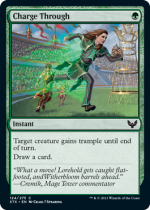Although nothing you've written here is actually untrue, and you craft a fair argument, I do have a couple of counterpoints...
The first being, we have very little info on the Strixhaven dragons. My interpretation of them so far is that as Elder Dragons, they behave less like D&D dragons and more like dragons such as Niv-Mezzet; being powerful loremasters and sages, practically gods. This matches how they seem to be stands in for Harry Potter's Hogwartz founders (Gryffinder, Slytherin), and are more focused around a school of magic instead of anything particularly dragon-focused. The images so far from Strixhaven don't seem to have anything particularly dragon themed.
As for the new fey-races not having a history in D&D... they do!
Faeries have
appeared many times in D&D, the owlfolk seem to be a callback to the
Feywild-dwlling owl-like Hsaio, and the
kingdom of goblins in the feywild references how goblins may originate there. Rabbitfolk is the one entirely new thing.
I'll admit a lot of the above is pulling from older editions, and will likely be doing some retconning to fit it all in 5E, but all in all these races do seem to meld pretty well with D&D's Feywild.



